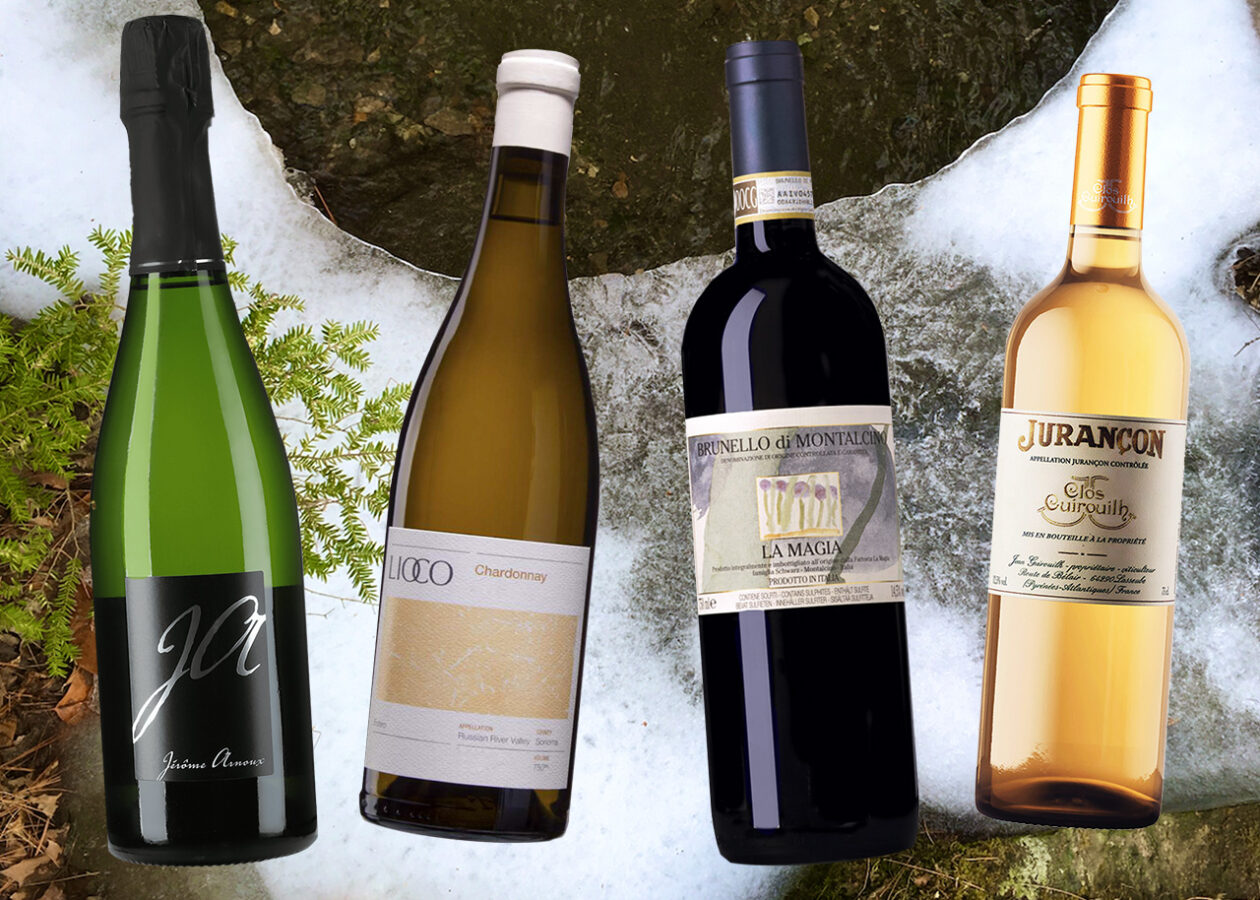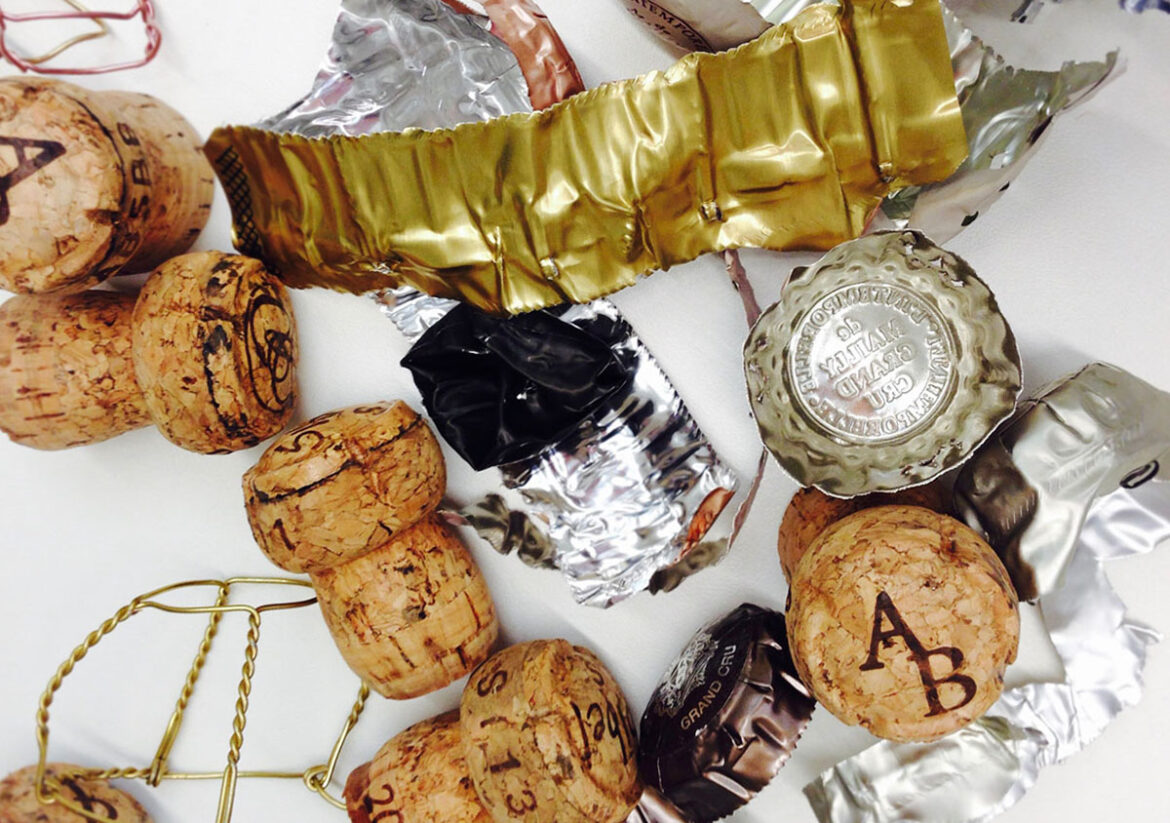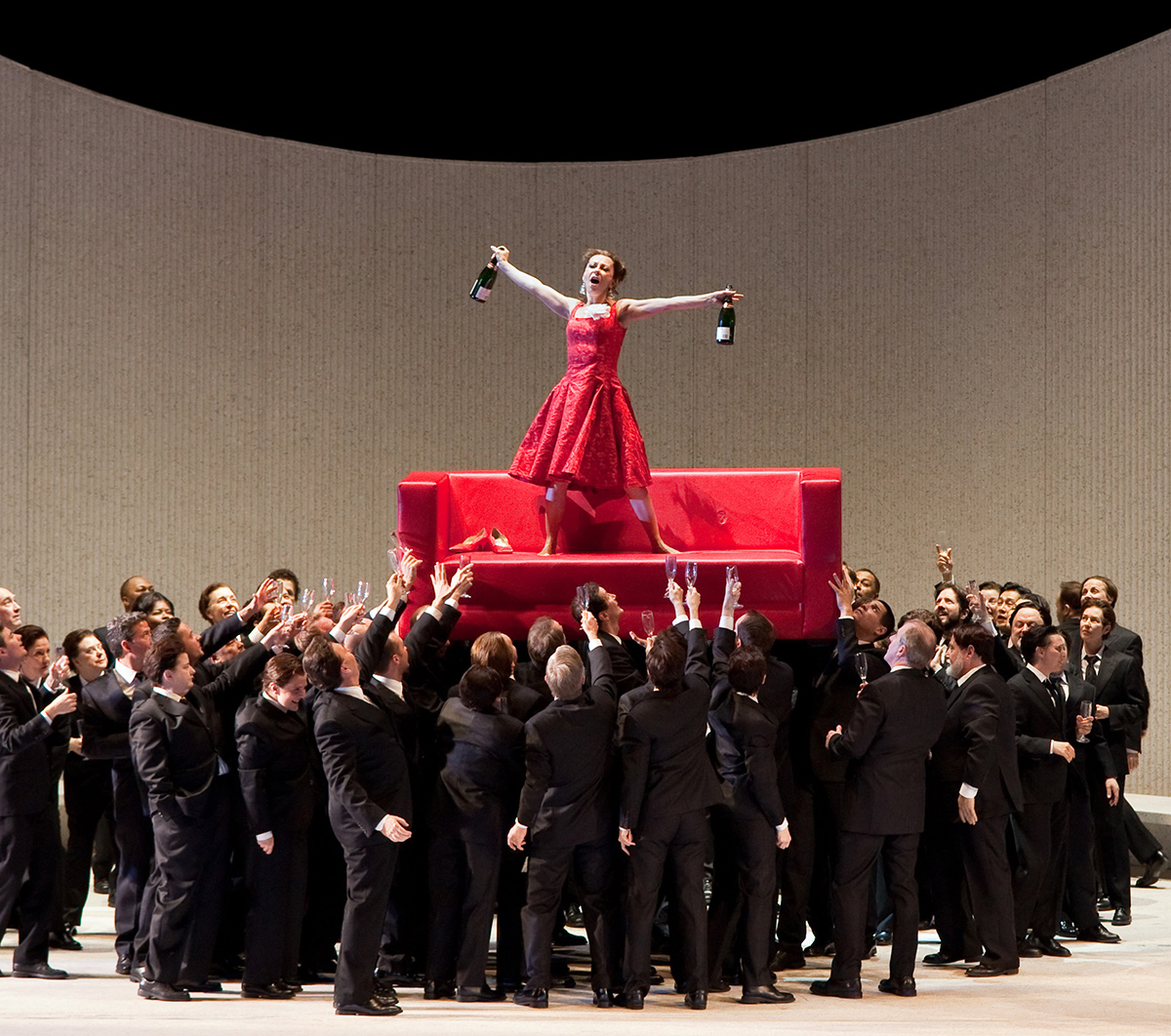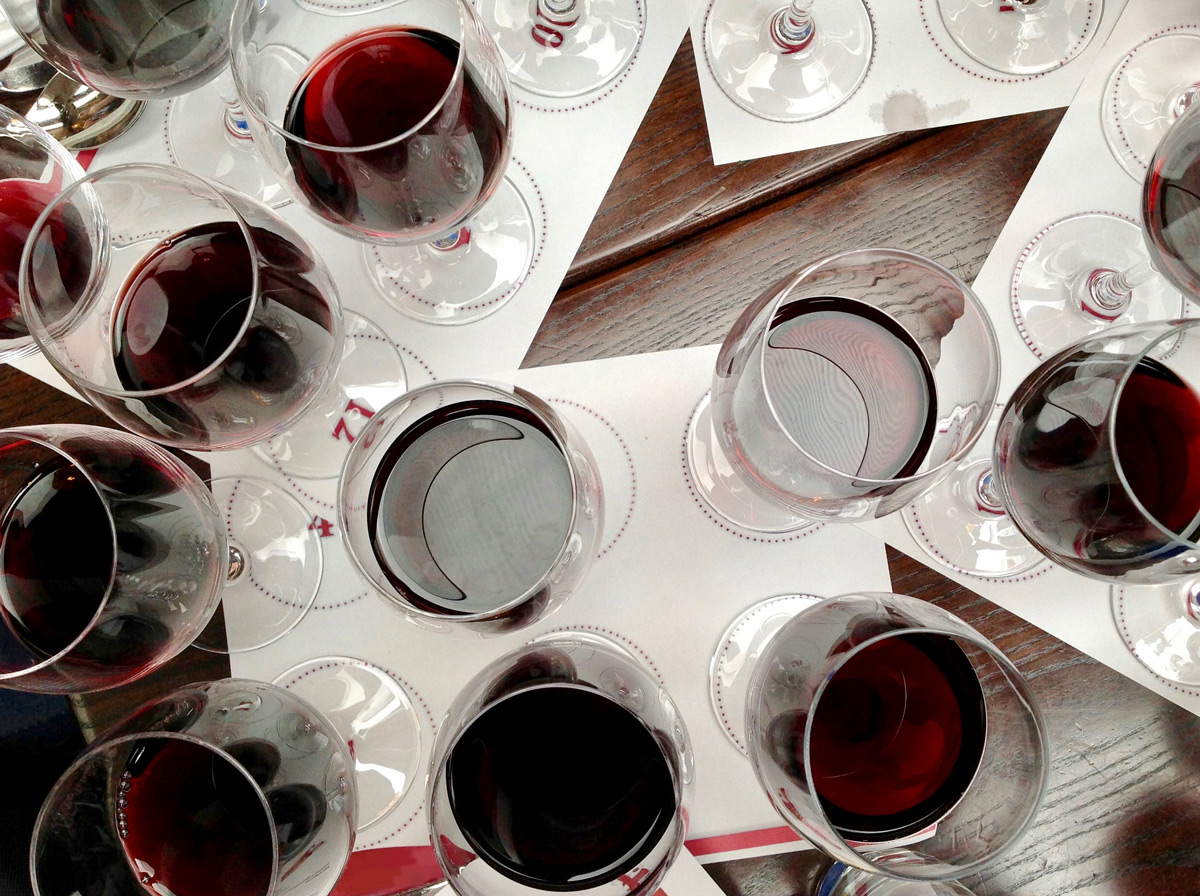Few culinary tasks seem as daunting as selecting wines for a special meal. Multi-hour events, multiple courses, special recipes, and holiday pressures just add to the stress. Deep breath! The process isn’t hard if you follow a few tips:
- Sequence wines from light to heavy.
Begin with wines that are light in color and low in alcohol, then progress to darker, more heady wines before ending with sweet for dessert. Chefs often sequence courses from light to heavy, too. Or consider this analogy: black coffee, coffee with milk, coffee with cream, then coffee with cream and sugar.
- Start with sparkling.
Its glittery texture is energizing, and the many styles (white, rosé, amber, red; traditional method, tank method, pét-nat, yada) offer options for a range of starter snacks. It’s almost always low in alcohol, satisfying that prerequisite. And anyway, who doesn’t love sparkling wine?
- Don’t stress about flavor pairings.
Every white wine tastes like apple, lemon, or stone fruit; every red wine tastes like berries, herbs, and earth. That’s an exaggeration, but it’s also a good reminder not to get twisted up about matching specific flavors in the glass to those on the plate. Pour what you like and the pleasure will follow.
- Focus food pairings on weight and texture instead.
Light textured, high acid wines of all colors balance fresh, raw, delicately prepared, and high acid foods. Rich whites, deep rosés and amber wines, and tannic, chewy reds partner with more robust preparations. Red wines’ tannins scrub fat and protein from the palate, refreshing it for another bite.
- Go ahead: serve wine with salad.
Just choose one with firm acidity. Rosé is often copacetic, ditto grassy-herbal whites. Again, think about weight and texture. Frisée or bibb lettuce in lemon vinaigrette needs a delicate wine. Grilled vegetables with balsamic might even want a (light) red.
- Choose a dessert wine at least as sweet as the dish.
The sugar in dessert wines makes them good with sweet foods (and spicy and salty foods, too), while their acidity refreshes. But do ensure that the wine is sweeter than the food, otherwise it’ll feel flabby.
- Ask for help.
The staff at your favorite wine shop can recommend wines for particular foods, tastes, and occasions, in all price ranges.
- Keep it light, don’t get bogged down.
I first heard that from a ski instructor, but it’s a good maxim for any daunting task. Remind yourself that your guests are your friends, it’s just one evening, and, if the fates are kind, there will be many more.
On a rainy First Friday evening recently, I poured the following tasting flight at Fontinalis, a Vermont wine shop specializing in organic, small-batch, old-fangled wines. I wanted to show how the wines could progress along various axes — from light to dense, sparkling to still, dry to sweet, fruity to tannic (and back). In these ways the flight creates its own story arcs while also pairing amicably with a variety of foods and moods.

NV Jérôme Arnoux Crémant du Jura Élégance Extra Brut
Crémant is what the French call sparkling wines made like champagne just not in Champagne. Winemaker Jérôme Arnoux owns a small plot in Arbois, in the Jura region on France’s eastern flank, farming his vines organically and biodynamically. His “Élegance” crémant is a fifty-fifty blend of Chardonnay and Pinot noir fermented with ambient cultures. It spends two years on lees before disgorgement and is topped with a modest dosage of 5 g/L, just enough to polish the edges. It’s a plush mouthful of a wine, with abundant pleasing fruit; Jura sparklers are often more substantial than their Champagne cousins, and this wine delivers. Serve it with salty snacks and canapés or pair it with fish or shellfish, savory pastries, soufflé, poultry, light cheeses, or apps with vegetables or mushrooms.
12.5% ABV | About $34
2021 LIOCO Chardonnay Estero Russian River Valley
Fruit for LIOCO’s “Estero” bottling is sourced from their favorite sites in the Russian River Valley of Sonoma County. The grapes ferment with ambient cultures in neutral oak puncheons (600L barrels), where they remain for ten months. After blending, the wine ages in stainless steel for an additional six months before bottling. Although the wine goes through full malolactic conversion, it retains firm acidity with no hint of buttery caramel. Silken and nuanced, it’s a good choice for light poultry, fish and shellfish, vegetable terrines, and cheese or cream sauces.
12.8% ABV | $42
2017 Fattoria La Magia Brunello di Montalcino DOCG
La Magia, in Montalcino, is a 15-hectare organic estate farmed by the Schwartz family since 1979. The vineyards are planted at 400 to 450 meters, and the Sangiovese vines are over 40 years old. These factors conspire to create a wine that’s elegant (high altitude) and concentrated (old wood). The grapes are vinified in a mix of stainless steel and oak casks and the wine ages for three years in 500L French oak, one-third new. Brunello is a powerful wine that rewards cellaring; this 2017 is just starting to let its hair down. The fruit here has an ornament of sandalwood, and the healthy tannins suggest a pairing with roasted meats, grilled mushrooms, game (venison, game birds, rabbit), aged cheeses, Peking duck, or pork char siu.
14.5% ABV | About $60
2015 Clos Guirouilh Jurançon
Jurançon is a small wine region in the foothills of the Pyrenees in southwest France, where grapes Gros Manseng, Petit Manseng, and Petit Courbu dominate the vineyards. The region is especially known for its sweet wines whose pronounced acidity keeps them fresh. Winemaker Jean Guirouilh (“ghee-rooie” — just say it like you mean it) descends from a family that’s been producing wine in this region since the 16th century. His sweet Jurançon is made from 75% Gros Manseng and 25% Petit Manseng grown on 40-plus-year-old vines. The fruit is vinified in stainless steel and fermentation is halted at 85 g/L of residual sugar (viz., sweet but not too), before longer wood cask aging. It’s elegant, dimensional, fresh and absolutely not treacly. You might serve it with dessert pastries and strudels, especially ones made with apples, pears, or peaches, but I’d opt for a finishing flight of cheeses and mignardises. This wine was arguably the hit of the night.
12.5% ABV | About $34





That Jurançon has me very interested. But I am not going to try to pronounce the winemaker’s name, even with commitment!
It’s really delicious! The estate makes a dry version, too, and both are imported, so do shop carefully.